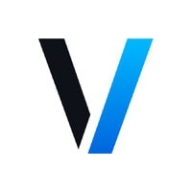

Veracode and OpenText Core Application Security are leading contenders in the application security field. Veracode holds the upper hand due to its comprehensive feature set and adaptability in various environments.
Features: Veracode offers a wide array of features including both static and dynamic code analysis, low false positives, and seamless integration capabilities. Its intuitive platform provides comprehensive security insights, beneficial for developers and security teams in vulnerability mitigation. Alternatively, OpenText Core emphasizes robust application security with unique code scanning tools, but lacks the extensive language support and integration capabilities that Veracode provides.
Room for Improvement: Veracode could improve by addressing its higher false positive rate, enhancing the user interface, improving API support, and expanding language compatibility. Users have expressed the need for navigation and reporting enhancements to support better user experience. OpenText Core should broaden its dynamic testing capabilities and reduce false positives. Enhancing platform support and refining reporting features are critical for its competitive positioning in the market.
Ease of Deployment and Customer Service: Veracode supports multiple deployment options, including public and private cloud scenarios, and allows for seamless integration into existing DevSecOps pipelines. Customer service is generally positive, though there can be variability in response times and issue resolutions. OpenText Core is strong in on-premises deployments, with competent technical support, though it could benefit from greater deployment flexibility to meet diverse enterprise needs.
Pricing and ROI: Veracode is considered a premium tool with a relatively high cost, justified by its extensive features and solid customer support. It offers different licensing models but can be costly for smaller organizations. Some users find it cost-effective due to lower security maintenance expenses. OpenText Core is similarly seen as expensive compared to alternatives but valuable for its capabilities. Both products ensure ROI through enhanced code security and developer efficiency, making them worthy investments for comprehensive application security.
| Product | Market Share (%) |
|---|---|
| Veracode | 6.8% |
| OpenText Core Application Security | 3.6% |
| Other | 89.6% |


| Company Size | Count |
|---|---|
| Small Business | 16 |
| Midsize Enterprise | 8 |
| Large Enterprise | 43 |
| Company Size | Count |
|---|---|
| Small Business | 70 |
| Midsize Enterprise | 43 |
| Large Enterprise | 112 |
OpenText Core Application Security offers robust features like static and dynamic scanning, real-time vulnerability tracking, and seamless integration with development platforms, designed to enhance code security and reduce operational costs.
OpenText Core Application Security is a cloud-based, on-demand service providing accurate and deep scanning capabilities with detailed reporting. Its integrations with development platforms ensure an enhanced security layer in the development lifecycle, benefiting users by lowering operational costs and facilitating efficient remediation. The platform addresses needs for intuitive interfaces, API support, and comprehensive vulnerability assessments, helping improve code security and accelerate time-to-market. Despite its strengths, challenges exist around false positives, report clarity, and language support, alongside confusing pricing and package options. Enhancements are sought in areas like CI/CD pipeline configuration, report visualization, scan times, and integration with third-party tools such as GitLab, container scanning, and software composition analysis.
What features define OpenText Core Application Security?Industries like mobile applications, e-commerce, and banking leverage OpenText Core Application Security for its ability to identify vulnerabilities such as SQL injections. Integrating seamlessly with DevSecOps and security auditing processes, this tool supports developers in writing safer code, ensuring secure application deployment and enhancing software assurance.
Veracode is a leading provider of application security solutions, offering tools to identify, mitigate, and prevent vulnerabilities across the software development lifecycle. Its cloud-based platform integrates security into DevOps workflows, helping organizations ensure that their code remains secure and compliant with industry standards.
Veracode supports multiple application security testing types, including static analysis (SAST), dynamic analysis (DAST), software composition analysis (SCA), and manual penetration testing. These tools are designed to help developers detect vulnerabilities early in development while maintaining speed in deployment. Veracode also emphasizes scalability, offering features for enterprises that manage a large number of applications across different teams. Its robust reporting and analytics capabilities allow organizations to continuously monitor their security posture and track progress toward remediation.
What are the key features of Veracode?
What benefits should users consider in Veracode reviews?
Veracode is widely adopted in industries like finance, healthcare, and government, where compliance and security are critical. It helps these organizations maintain strict security standards while enabling rapid development through its integration with Agile and DevOps methodologies.
Veracode helps businesses secure their applications efficiently, ensuring they can deliver safe and compliant software at scale.
We monitor all Application Security Tools reviews to prevent fraudulent reviews and keep review quality high. We do not post reviews by company employees or direct competitors. We validate each review for authenticity via cross-reference with LinkedIn, and personal follow-up with the reviewer when necessary.